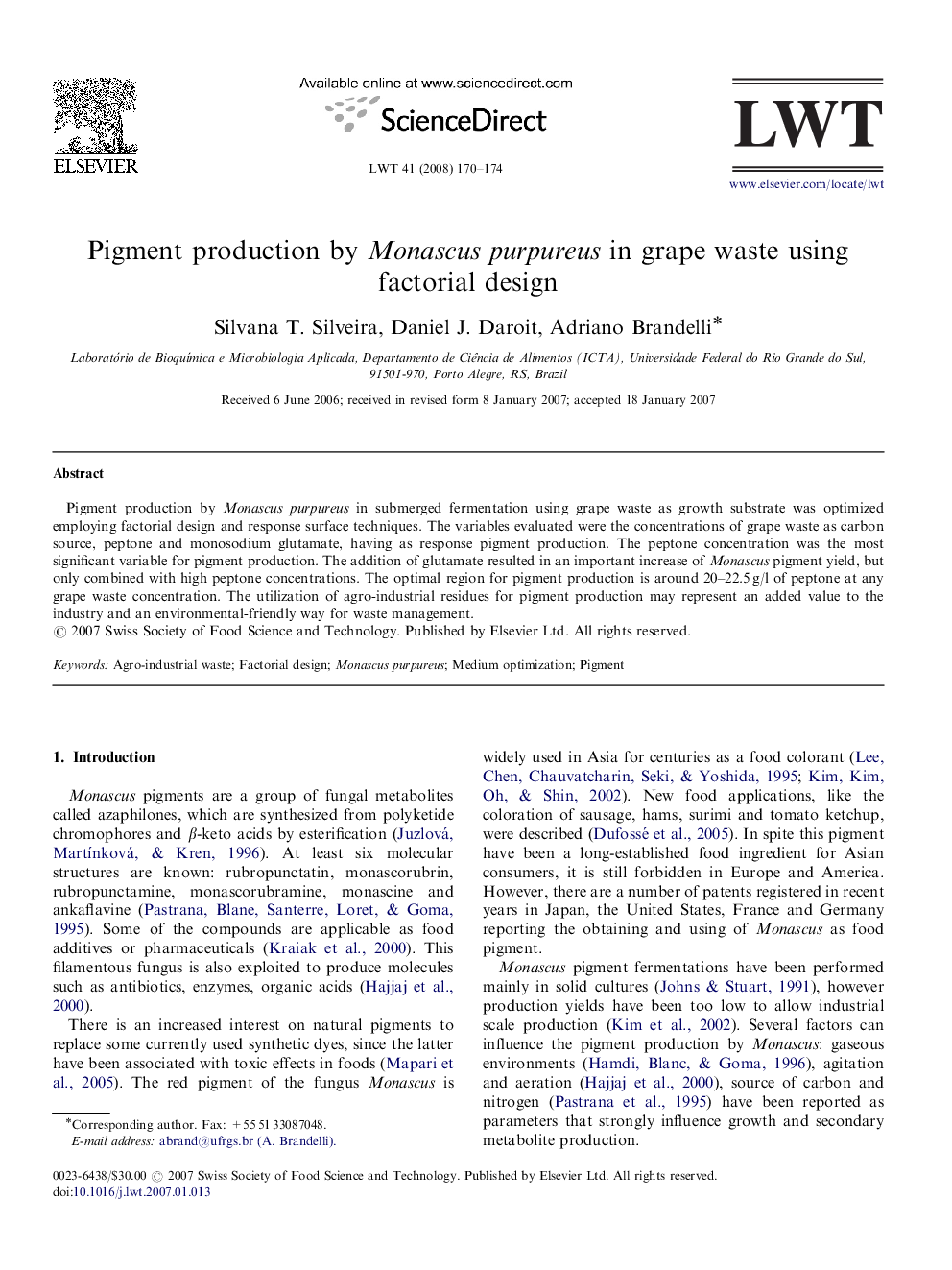| Article ID | Journal | Published Year | Pages | File Type |
|---|---|---|---|---|
| 4565095 | LWT - Food Science and Technology | 2008 | 5 Pages |
Pigment production by Monascus purpureus in submerged fermentation using grape waste as growth substrate was optimized employing factorial design and response surface techniques. The variables evaluated were the concentrations of grape waste as carbon source, peptone and monosodium glutamate, having as response pigment production. The peptone concentration was the most significant variable for pigment production. The addition of glutamate resulted in an important increase of Monascus pigment yield, but only combined with high peptone concentrations. The optimal region for pigment production is around 20–22.5 g/l of peptone at any grape waste concentration. The utilization of agro-industrial residues for pigment production may represent an added value to the industry and an environmental-friendly way for waste management.
